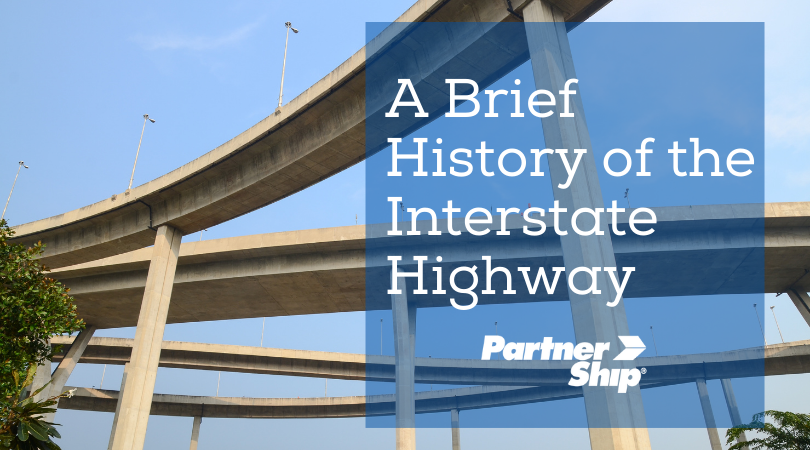A Brief History of the Interstate Highway System
04/21/2016 — PartnerShip
 Did you know that the interstate highway system our
trucking industry depends on began its life as the “Interstate and Defense
Highway System?” We’ll explain the “defense” aspect soon, but first, a bit of
history.
Did you know that the interstate highway system our
trucking industry depends on began its life as the “Interstate and Defense
Highway System?” We’ll explain the “defense” aspect soon, but first, a bit of
history.
In the 1920s, automobiles became more affordable, more
families were traveling and moving, and motor truck traffic was increasing as
the economy grew and the country expanded. Before the federal government passed
“The Federal Aid Highway Act of 1925,” many of the country’s 250 or so highways
carried names such as “The Lincoln Highway” or “The Dixie Highway.” The new
system would use the now-familiar shield and uniform numbers for interstate
highways.
But more drivers needed more roads. Who would pay for
them? Other transportation systems (streetcars, subways, elevated trains) were
usually built and operated by private companies that made infrastructural
investments in exchange for long-term profits. Transportation interests, such
as car manufacturers, tire makers, gasoline refiners and service station
owners, suburban developers, and trucking companies, began to convince state
and local governments that roads were an important public concern.
Now, back to the “defense” part of the highway system. The man who would become president in 1953, former Army General Dwight D. Eisenhower, was stationed in Germany during World War II and had been impressed by its network of high-speed roads known as the Reichsautobahnen. After he became president, Eisenhower made it a priority to build a highway system that would help connect the nation and provide key ground transport routes for military supplies and troop deployments in case of an emergency or foreign invasion. When the highway system was introduced, it was simply known as "the National Defense Highway System."
The “Federal-Aid Highway Act” passed in June 1956
authorized the construction of a 41,000-mile network of interstate highways and
allocated $26 billion to pay for them. The federal government would pay 90
percent of the cost of construction with the states picking up the remaining 10
percent.
A promotional piece from 1961 claims the new highway
system will: “Build up depressed areas. Strengthen our National Defense. Bring
in industry. Provide jobs. Improve land values.”
So next time you’re on I-10 on the west coast, I-95 on the east coast, or traveling through the heartland on I-80, remember that the Interstate Highway System we depend on for commerce and travel was created with national defense in mind.




